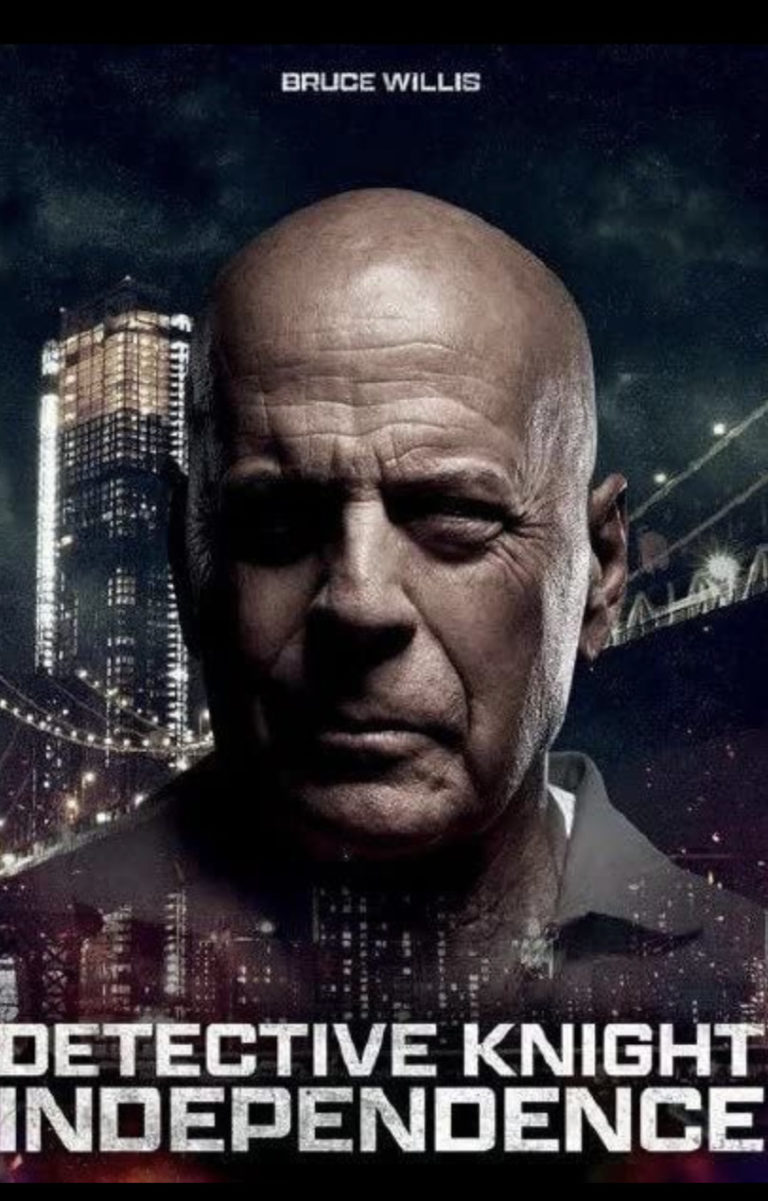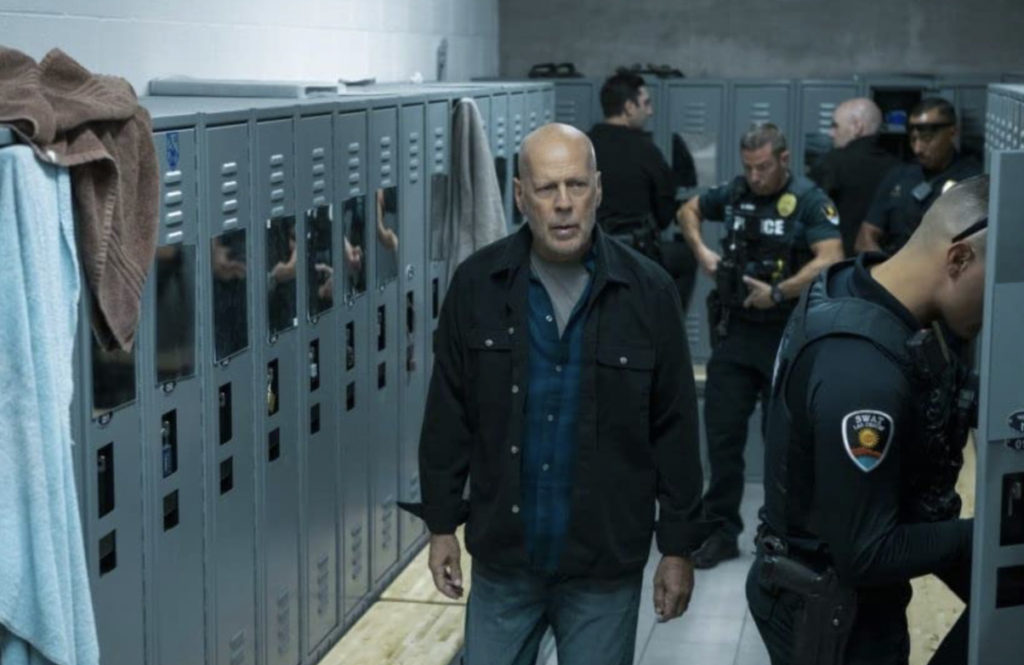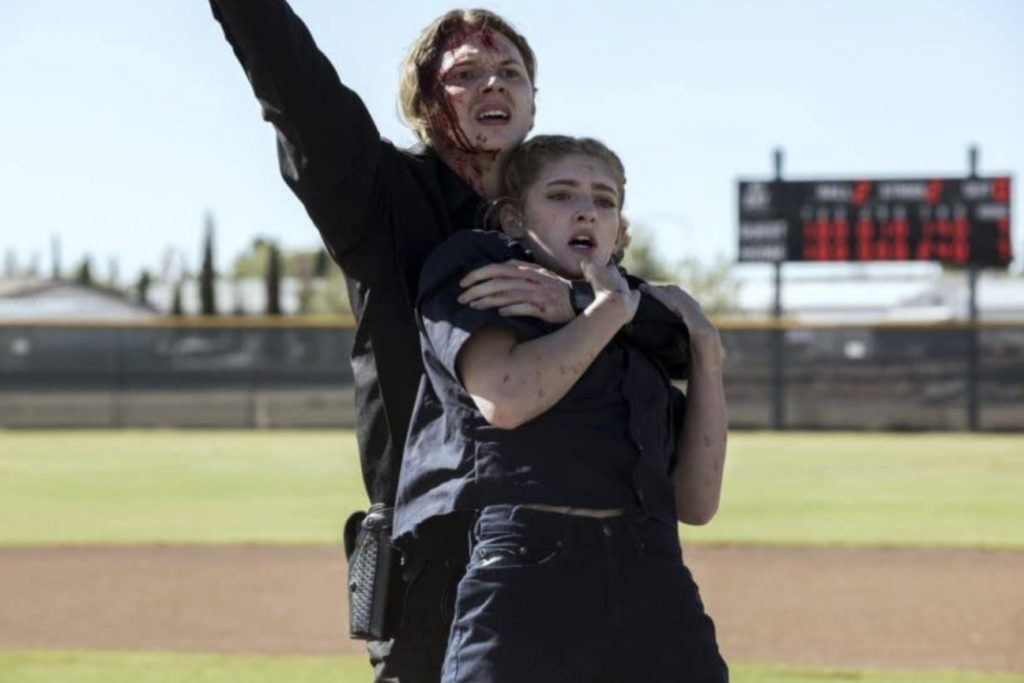
Honoring, and bringing justice to, people who are seeking greater meaning to life is a powerful theme for both the cast and crew, as well as the characters, of the new action thriller, Detective Knight: Independence. The justice-fueled drama, which stars Jack Kilmer, Lochlyn Munro, Jimmy Jean-Louis, Willow Shields, Dina Meyer, Timothy V. Murphy and Bruce Willis in his final film role.
The movie serves as the final entry in the hit Detective Knight trilogy. It not only respects its characters by protecting victims from corrupt members of society, but also celebrates Willis’s performances as the titular detective, as well as his overall action career. The Golden Globe-winning actor decided to retire from acting after his family announced last year that he was diagnosed with aphasia.
Edward Drake, with whom Willis has collaborated with on over half-a-dozen films over the past several years, co-wrote and directed Detective Knight: Independence. The filmmaker also scribed and helmed the actor in the series’ first two installments, Detective Knight: Redemption and Detective Knight: Rogue, both of which were released last year.
The duo also worked together on several other action thrillers, including Gasoline Alley and American Siege, both of which were also distributed last year. Drake and Willis also collaborated on the 2021 movies, Apex and Cosmic Sin.
Detective Knight: Independence follows the eponymous detective, James Knight [Willis] as he takes on a last-minute assignment on Independence Day. But the shift ultimately turns into a race to stop an unbalanced ambulance EMT from imperiling the festivities across Los Angeles.
The misguided vigilante, who’s impersonating a cop with a stolen gun and uniform, has stolen a bank vault, and will stop at nothing to get away with this crime. As a result, Detective Knight must do whatever it takes to stop the self-proclaimed guardian of the city.
Drake generously took the time this week to talk about penning and directing the new action thriller during an exclusive interviews over Zoom. Detective Knight: Independence is now available in select theaters, On Digital and On Demand.
Q: Along with Corey Large, you co-wrote the script for the new action thriller, Detective Knight: Independence, which serves as the third and final entry of the Detective Knight trilogy. How did you create the story for the series’ last installment?
ED: I was super lucky. I knew that I would be writing for Mr. Willis, and I could play with his legacy. That was something I was fighting for ever since we started working together.
I was also doing a revisionist, new take on what it means to be a police officer in film and television with the legacy that he’s had in this day and age. That meant coming up with our antagonists first, and then letting them defining what Knight’s challenges were going to be.
I then worked my way back into the character that way. I thought that was a really fun approach because I’ve never tried it that way before. It was also really rewarding, as we got some cool bad guys throughout the trilogy.
Q: In addition to co-scribing the script, you also directed the film. How did penning the screenplay influence your helming style during the production?
ED: I think the biggest benefit of directing something that you’ve written is that your ability to adapt is incredibly high. As the writer, you know the characters and the plot, and as the director, you know the linguistical challenges that the production faces.
Sometimes, those things collide, and you can’t shoot things as they’re written. For example, there was torrential rain that happened while we were making these movies. So the sequences that were set outside had to be moved inside. There were also actors who couldn’t make it to set for certain scenes because of the storms, so I had to write them out.
So in terms of what’s the biggest benefit of being a writer-director, it’s having the confidence of being able to build a sense of trust with your crew. You can say, “Art isn’t made in a vacuum, so that plan that we came up with yesterday that was perfect then isn’t working now; there are too many elements that are missing now. So if we go and try to do this the old way, we’re going to fail, so we have to adapt.” So that was the mantra while we were making these movies: adapt or die.
Q: Speaking of having to make last-minute changes to certain scenes, how did you work with the drama’s cast to implement those adjustments, and build their overall characters arcs?
ED: I love working with actors; it’s my favorite part of the filmmaking process. Jimmy Jean-Louis, who played Detective Godwin Sango throughout the trilogy, just worked with the Russo Brothers on The Gray Man with Ryan Gosling and Chris Evans, just a couple of minor actors who you may not have heard about. [Drake laughs.]
Jimmy talked about the freedom on that set, in terms of the improvisation. So he was already coming in with that experience, and was so sharply in tuned with the ability to ask, “What if I just throw this out?”
A lot of the best improvs aren’t always verbal, which is something that I don’t always hear people talk about. It can be gestures or looks, and that’s the reaction of acting. But it can go beyond just a reaction; you can improvise a completely new beat within a scene that doesn’t always have to be a verbal punchline.
Bruce is the undisputed king of the one-liner. He came up with a lot of his own witticisms on set, which was fun.
Everyone was also trying to make each other laugh on set. We’re very aware of what these movies are entertainment first, so we want the audience to see that we had a lot of fun making them. So that gave us a lot of opportunities for improvising.

Q: How did you create the action sequences and the characters’ physicalities with Detective Knight: Independence’s actors and stunt coordinator?
ED: Fortunately, I was able to work with an incredible stunt coordinator on Independence; his name’s Thomas Forbes-Johnson. We also worked together on Cosmic Sin about three, four years ago.
He’s one of my favorite people. He’s a giant, seven-foot tall Englishman who has instilled in me this sense of, we’re going to get it right. But the most important thing is that the cast and crew get to go home safely to their families at the end of each day.
We were shooting after a tragedy that had just happened four or five days earlier in New Mexico. So we were hyper aware of the gun play. There weren’t any blanks on set; it was all CG movie magic that was done in editing to create the gun fire.
With Thomas, when it came to the action, what we were able to do was create such a great level of support. That way, the actors knew that we had their back – literally – as we were throwing them through the walls. That allowed them to create an enhanced physicality, since they knew that they were 99 percent as safe as can be.
I’m so grateful that we didn’t have any COVID cases or injuries on the set. That, to me, is the mark of a good film. If the film does well on the charts, even better! But the safety of the cast and crew was our top priority. It takes an army to make these movies!
Q: The drama was shoot on location in New Mexico. How did filming on location influence the way you shot the project?
ED: For Independence, we shot for seven days in New Mexico, about 40 minutes away from the Mexican border. That doubled for the Valley in Los Angeles.
Fortunately, I was able to ask Jack Kilmer, who plays Dezi, “When we’re back in L.A., can you come back so that we can get a few shots so that we can tie the tapestry of the city together? That way, the audience will never doubt, or lose the moment, of being in Los Angeles.” Jack said, “Let’s do it.”
So we ran around L.A. without any permits, with Jack dressed as a police officer, dancing under the 3rd Street Bridge, which was a lot of fun. Thank you to Jack, of course, but I’m just glad that we didn’t get arrested! Otherwise, we wouldn’t have been able to finish the movie.
Q: The sequel was visually shot in a unique way. Why did you decide to film the thriller in such a distinct way of cinematography?
ED: So funnily enough, I was in Tanzania, climbing Mount Kilimanjaro when I got the call that these movies were greenlit, and we were going to be shooting them in three months from that date.
I turned to one of my best friends, Laffrey Witbrod, who has been a cinematographer across a number of movies that I’ve done. We were climbing Mount Kilimanjaro together as part of a documentary, and I just asked him, “How would we approach these movies?”
We knew what kind of productions they would be – very fast, seven day shoots back-to-back-to-back. So on the side of the mountain, we came up with a sense of reality. We didn’t want to be so gritty on the street that people would ask, “Why didn’t you just shoot this with an iPhone or anything like that?,” as that’s not what these stories are.
We wanted to feed into a sense of realism with the lighting design, without any glorification. There are never any cowboy shots in this, or shots in slow-motion. We kept to capturing the events of the script.
Hopefully we left a little grit that you can feel under the fingernails, but not so much that you feel pained watching it at the same time.
These films are entertainment; I always put myself in the audience’s shoes, and ask, “What would I want as an audience member, and how can I surprise the audience?”
I think that with the visual design that Laffrey came up with, we were able to do that. That just meant a lot of running and gunning to make it work.

Q: Detective Knight: Independence is now playing in theaters and On Demand and Digital, courtesy of Lionsgate. What does it meant to you the film received the dual theatrical and Digital model of release?
ED: It’s been a real joy to be able to work with Lionsgate on these movies. It [played] in a theater in Los Angeles [on opening day, Friday, January 20], and a bunch of us [went] to see it. I [was] very excited for that.
I’m also excited to see how audiences interpret this final movie because it was Bruce’s last time on set. So it was our last opportunity to try and go with it. We had fun and were safe. We also got to blow up a few cars along the way!
If this is the last film I ever get to make, I’m so lucky that I got to work with my friends and bring so many good people together. So it was very exciting!
Check out more of Karen Benardello’s articles.
Here’s the trailer of the film.

